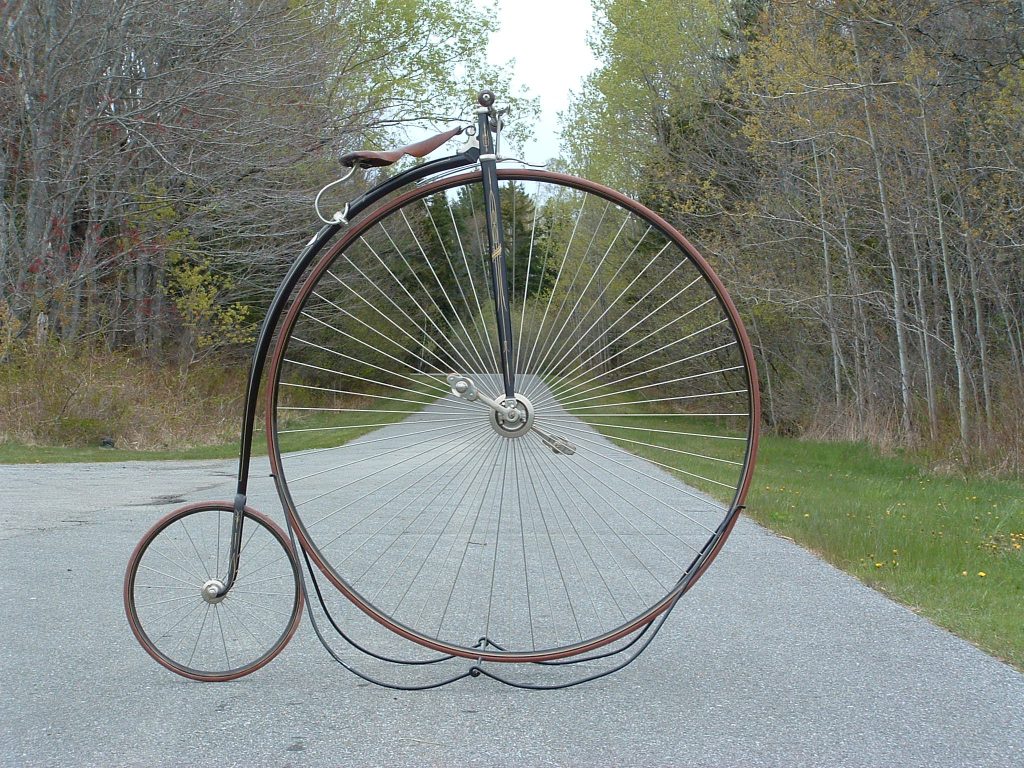ca. 1880-1889 Excelsior Highwheeler












Description
Revolutionizing the wheel was necessary for the bicycle to succeed. With pedals mounted directly to the front wheel, the only way a cyclist could go faster on a flat path was to pedal harder. Wheel makers knew that a bigger wheel would go farther with the same pedal rotation. Unfortunately, at some point, a wooden wheel would get so big that it would be too heavy for a rider to pedal. Eugene Meyer, a French mechanic, exchanged the…
Revolutionizing the wheel was necessary for the bicycle to succeed. With pedals mounted directly to the front wheel, the only way a cyclist could go faster on a flat path was to pedal harder. Wheel makers knew that a bigger wheel would go farther with the same pedal rotation. Unfortunately, at some point, a wooden wheel would get so big that it would be too heavy for a rider to pedal. Eugene Meyer, a French mechanic, exchanged the traditional wooden spokes for thin metal wires. Dramatically lighter but just as strong, the wire-spoked wheels could get much larger without getting heavier. To maximize speed, riders ordered wheels up to double the length of their legs. A person with 30-inch legs could ride a 60-inch wheel and reach speeds up to 17 miles per hour.
This new “high wheeler” was much faster than the velocipede, but it also brought new challenges for riders. The first was trying to get on. To mount a high wheeler, the rider needed to get the bike rolling before scrambling up the back, into the saddle, and getting feet on the moving pedals before it lost too much speed and fell over. The next challenge came once in motion, when the rider’s center of gravity shifted very far to the front of the bicycle. This meant that small bumps in the road could send someone flying over the handlebars, and it was a long way to the ground.
High wheelers trickled into the United States throughout the early 1870s, but they did not become popular until after some British versions were exhibited at the 1876 Centennial International Exposition in Philadelphia, Pa. At the same time Alexander Graham Bell exhibited the first telephone,and George Corliss powered the event with a giant steam engine,Massachusetts manufacturer Albert Pope saw his first high wheeler. At the time, he thought they were something only “trained gymnasts” could ride, but the following year, Pope had the chance to ride one belonging to a houseguest. When he mastered riding, Pope imported some British bicycles to sell in 1877. The next year, Pope began manufacturing under his own brand — Columbia Bicycles. Over the next decade, America’s production of high wheelers rose from 50 to almost 17,000.
